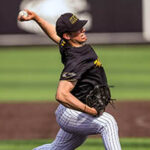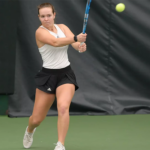UWM’s award-winning undergraduate research program encourages and highlights the work of students all over campus. Every year a number of these researchers are chosen to receive the Senior Excellence in Research Award.
The 2021-2022 winners were honored at an in-person event in Mitchell Hall 195 in May. Each student had the opportunity to share outcomes of the research projects and creative activity they worked on over this academic year, as well as to share what they have learned overall from their undergraduate research journeys.
In addition to being active in research as seniors, the award recipients met monthly to discuss their progress and encourage others to take part in undergraduate research through class visits, presentations and media interviews.
Here’s a look at some of this year’s winners:
Meghan Berger and Mary Widener
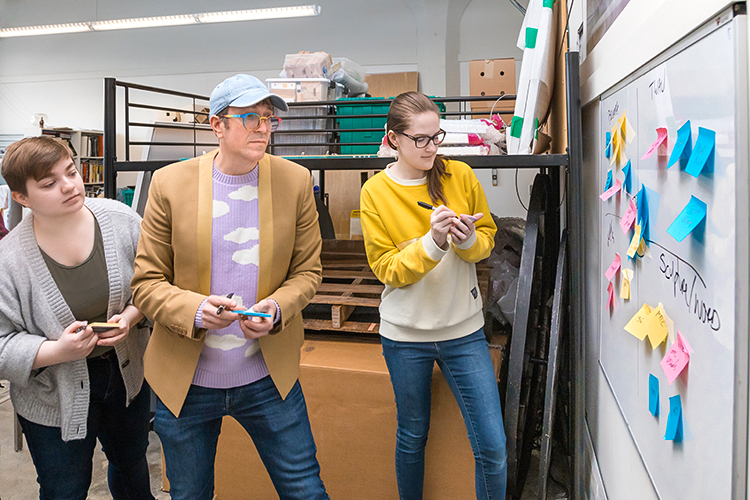
Meghan Berger is earning her BFA in design and visual communication with an honors degree. Working with her mentor, Nathaniel Stern, professor of art and design/mechanical engineering, since 2019, she has been involved with several projects. Those projects challenge audiences to think differently about the world around them. In January 2020, she joined other undergraduate researchers in assembling “The World After Us.” That exhibition, which combined the natural world with electronics, was shown in the gallery space at the St. Kate-The Arts Hotel. Berger and Mary Wiedener, who was also an award winner, traveled to the State University of New York in Binghamton in January for the “World After Us” exhibition.
Along with other researchers, she helped create a series of kinetic sculptures that incorporate ecological data. For example, one exhibit featured shoes cantering to the quality of air in the room; another showed laptops palpitating to the number of lives lost to cobalt mining. The sculptures are based on require careful research and experimentation around the data used.
Mary Widener is majoring in digital studio practice with a focus in print and narrative forms. She has been working with Nathaniel Stern since her first year at UWM. She has worked on a number of different projects. One major project is “The World After Us,” which is looking at what might happen to our technology after it is discarded. The project is also studying creative ways to reuse those materials now.
The work was developed into a traveling exhibition showing how to grind phones into ink for prints and insert plants into computers.
Most recently, she worked with other undergraduate researchers on a presentation for the Undergraduate Research Symposium titled, “Breath: Environmental Data-Driven Kinetic Sculptures.” The works consider the impact of pollution, electronic waste, sustainable energy and climate change and incorporate them into a series of kinetic sculptures.
Widener has been a presenter at the National Conference on Undergraduate Research and competed in UWM’s annual research program. She is a printmaker and illustrator with a special interest in comics, and is working on her first full-length graphic novel.
Berger and Widener traveled to the State University of New York in Binghamton in January for the “World After Us” exhibition.
Sanya Kathuria
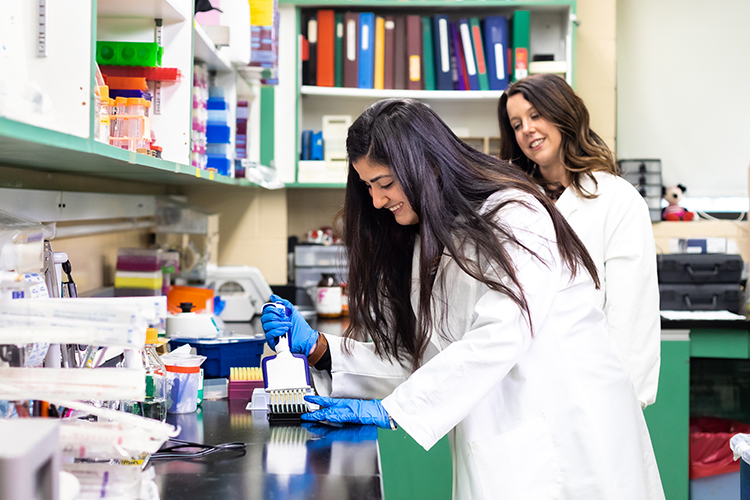
Sanya Kathuria is doing research to help find ways to reduce stress for patients undergoing rotator cuff surgery. Her work under mentor Elizabeth Liedhegner looks at how a mindfulness-based intervention can help support patients. A biomedical sciences major who came to UWM from New Delhi, India, Kathuria has been studying how stress is related to healing. As part of the project, she studied stress measurement questionnaires to see which were most valid. Kathuria has also been looking at the use of cortisol as a biomedical marker for stress.
Kathuria was interested in biomedical science because of its combination of clinical experience and hands-on research. “I took some courses in my major and found I was loving it.” She found the project she’s involved in on the undergraduate research website.
After commencement, she’ll be heading to graduate school to earn a degree in reproductive science, eventually moving into the field of embryology. “I always wanted to do something in obstetrics and gynecology.”
Nathan Tennies
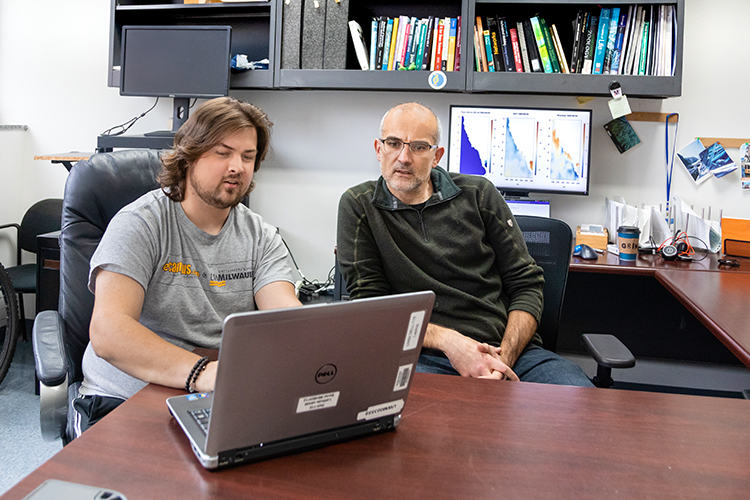
Nathan Tennies has combined his interests in mathematics and biological sciences in his research. Tennies, who works in the lab of Filipe Alberto, associate professor of biological sciences, is developing a web app to track and analyze data about how temperature fluctuations affect giant kelp off the central and south California coast. These kelp provide a key ecological habitat for aquatic life in the area. Using his mathematics skills, Tennies is developing ways of displaying markers, for example, that might indicate where previous research has been done with a link to the results. He’s hopeful that other undergraduate researchers will continue adding to the project’s findings.
Tennies said he’s been interested in biology since he was a child. His mom likes gardening and his dad has a small farm and he had a lot of exposure to nature through 4-H and the Boy Scouts. At UWM, he started working in the Janssen Lab at Freshwater Sciences, which led to his interest in aquatic plants. “Filipe’s lab was the next logical step since he’s the only marine botanist on campus.” After adding a mathematics major, he started doing modeling of data about aquatic plants. Working in Alberto’s lab has given him a way to explore this with his interest in aquatic botany.
This spring he also worked on a field research project in the Yucatan Peninsula. The goal of the project is to develop a metric for understanding the dwarf mangroves around Laguna Bacalar. He is working with Heidi Jeter of the School of Freshwater Sciences on two articles about that research.
He wanted to do undergraduate research as preparation for a future academic career.
“I have a whole research mindset now; I have a pretty decent understanding of what it’s like to work in labs and know that I really like it. Through the research, I’ve received opportunities to present at conferences, including one on the interface of biology and mathematics.”
In addition to other conferences, he will be presenting on his web app this summer at the annual meeting of the Society for Industrial and Applied Mathematics. “It should be a great opportunity to network and learn, with some of the conference subthemes being Life Sciences and Mathematics of the Planet Earth.”
Jessie Van Dyck
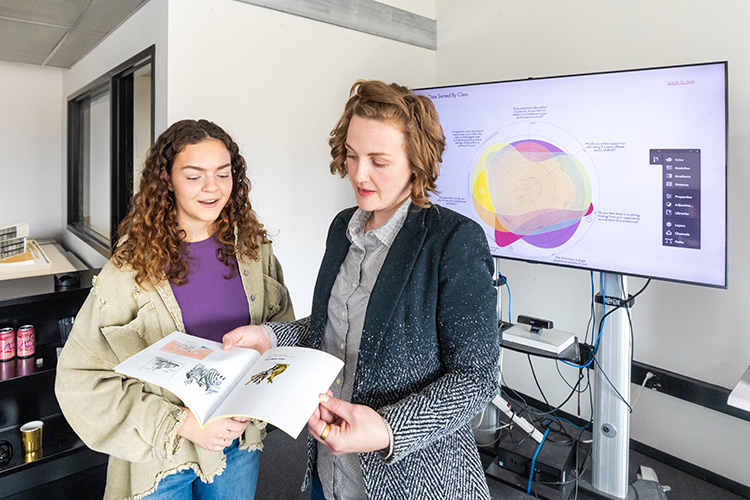
Jessie Van Dyck will be graduating with a Bachelor of Science in architectural studies, a certificate in urban planning and an honors degree with distinction. At first, she said, she wasn’t sure architecture was the field for her.
“A lot of students decide after their first design studio ‘I can’t do this anymore. It’s too demanding.’”
Then she got into research with mentor Trudy Watt. “When I was working closely with someone, I got to see a little bit more of a compassionate side of architecture and then I realized this is what’s for me.”
Her research work has focused on projects where design is compassionate and available to all. She and her fellow researchers have been involved in several projects that focus on improving health and social inclusion through design research, prototyping and community engagement. She’s developing a manuscript for a peer-reviewed scholarly journal and also worked with the research team on an online exhibit for the School of Architecture & Urban Planning gallery.
At this year’s undergraduate research symposium, she presented her findings on ways to make the teaching of architecture more inclusive and compassionate.
Van Dyck said she’d advise anyone who’s not sure about the field they’re interested in to get involved with undergraduate research. “It’s a way of figuring out what your niche is going to be within the field.”
Tien Wong
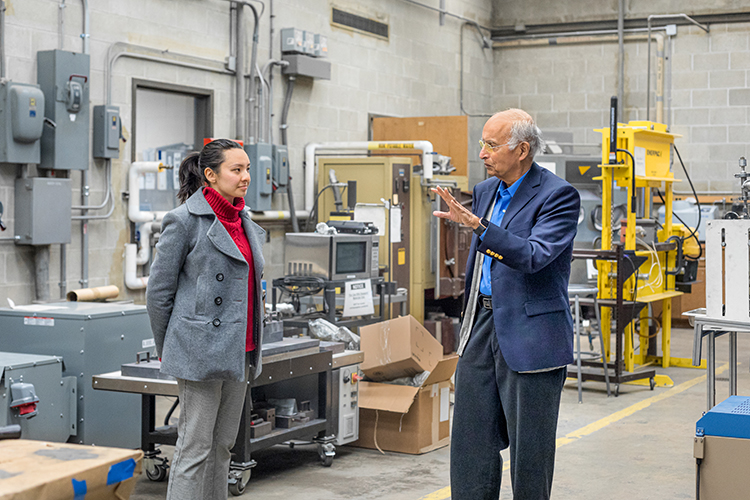
Tien Wong, a computer science major, researched machine learning, a subset of artificial intelligence. Wong is interested in understanding how machine learning can be applied to make scientific discoveries.
“We are developing machine learning models that can predict the tribological properties of aluminum-graphene metal matrix composites.” If that sounds complicated, it is – a merger of artificial intelligence with materials science. Basically, it involves developing machine learning models that predict the friction and wear behavior of aluminum graphene composites.
Wong was part of a team working with Pradeep Rohatgi, distinguished professor of materials science and engineering, on the project. Wong joined the team in spring 2021 on the advice of a friend who said the lab needed researchers. “It sounded like something I wanted to become involved in.” Wong found the undergraduate research experience inspiring. “Before I was just a student who had the ‘just graduate’ mindset. This gave me, as a student with no prior experience, a chance to learn something very new and exciting on the job.”
After graduation, Wong is going into industry as an associate software engineer.
“Undergraduate research was actually pretty useful because it gave me excellent practice in explaining my work, which was very helpful in interviews, Wong said.
Graduate school may be in the future. “I don’t know if I will attend graduate school, but if I do, I’d like to do either a master’s of computer science studying programming language theory because Professors Zhao and Boyland have gotten me very interested in it,” Wong said. “Or I’d like to do a master’s of business administration because it would be helpful for promotion into executive leadership (ideally as chief technology officer).”
One potential project of interest to Wong in future would be a “wearable” that could help young people on the autism spectrum manage daily life — reminding them of when to eat, helping generate grocery lists, making sure they get enough sleep and so on. “So many problems of autistic adults are time management and scheduling problems.”
